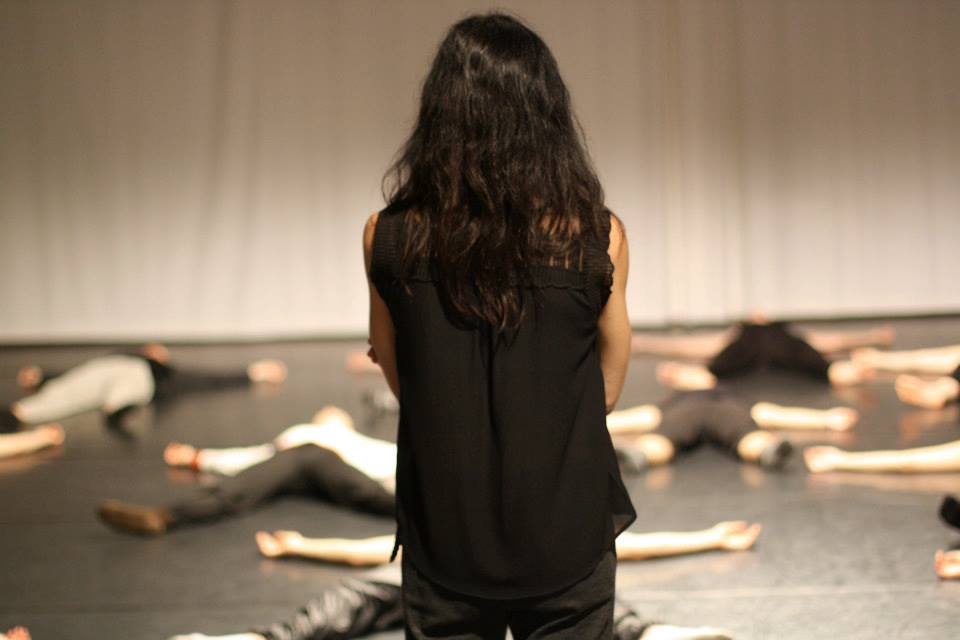I am a dancer, a dance maker, and a professor. I’ve studied movement my entire life. I watch the body in protest, how it moves coming out of self-isolation, in transition, in joy, ease, and celebration. Dance is a healing practice that feeds the mind and body — psychologically, chemically, for our cells, muscles, and bones. Getting up and moving, talking with students about their work, and creating together has certainly helped me and my students navigate this new territory. Dance has saved my life many a time, and these days I find myself wondering if it will again.
June 23 marked 100 days since we left Barnard. It feels like it has been so much longer. We all have been swimming in this trauma with our specific inabilities to carry on, side by side with our inspirations to create and move forward. We wait for friends to heal from sickness, decisions to be made, restrictions to be lifted, and the day we get to be with each other again. I’ve taken and taught dance classes online, created dance films for online festivals and panels, and written reflections for blogs and magazines. But my heart wasn’t in any of that work — I had to take time to reject, resist, cry, reflect, and find connection.
One of the things I love about art is its ability to reflect culture and impact societal change. My new work, light and desire, was slated to premiere at New York Live Arts in March 2020 as a personal and universal look at how women artists cope under oppressive and manipulative power structures. My international collaborators on this project, including 15 Barnard alumnae, and I have spoken at length about how each country is moving through this pandemic. We don’t yet know how the work, which has been pushed to April 2021, will transform, but as we are all activists and were already creating a sort of social feminist movement protest within the work, its evolution is inevitable. We are looking at transformation and moving through obstacles, and we can only go deeper.
Going deeper has been a theme of this time, from being quiet to listening and healing. The silver linings are clear and true for me: It is a blessing to have a pause from this hectic life I built, a life too full of burnout and stressful interactions. I cherish the time with my teenage daughter, my 9-year-old son, and my husband, the thriving nature and quiet before the city opens up, and the important work being done for racial justice, which has recently radically increased. Because I co-direct the Barnard Dance in Paris program, which has run in June for the past 10 years, I haven’t enjoyed June in New York City for a while. Was it always this beautiful? I will count on this beauty for Barnard’s summer semester in 2021. For now, I think about the incredible creations my students made in the transition to remote learning. At times, it seemed they were doing better than I, but I knew they were scared and that they are still experiencing grief and loss around an unknown future. I am forced to sit here and reflect on what heals me and how I move through hard times.
The future has always been unknown, but dancers practice swimming in the unknown; our traditions of improvisation and living in the moment have helped us navigate this inability to plan. Recently I’ve found some faith, a sort of visceral knowing, that we will be okay. I’m inspired by the conversations, questions, and actions being taken to support Black and Brown bodies and anti-racism. I feel connected to movement that relies on self-care, healing, and exploration. I’m finding energy to create and communicate in new ways with people from all over the world. I’m currently working with Bill T. Jones on a project he is doing with alumni of his dance company to raise money for Black Lives Matter.
With help from the Center for Engaged Pedagogy (CEP), I’m working to create inspiring online experiences for my students and myself, and I’m looking forward to teaching a technique class that meets more than twice a week, as dancers are used to a daily practice and deeper research into how we individually express ourselves. I look forward to being in the studio with students and connecting them with guest artists from other parts of the world, in order to have a more global perspective of the work. I also anticipate more collaboration in my introductory composition class, as students create work together and build community by supporting each other in dialogue and creation. I want my students to ask themselves: How is our body strong? How do we find individuality? How do we feel community? How do we reflect the world around us through dance? How do we communicate to each other and our audience?
This is a special moment to reset and learn what we really want, who we really are, and what is important to us. Movement is important; it is essential. If we learn to listen, there is information about our bodies and minds that can set us on a life that is full of healing, curiosity, and love.
I don’t mind
Being the non-essential.
Even a child takes
Its mother for granted.
It does not run back
To its mother until it is hurt.
Nobody first thinks of water
When they arrive
At an exquisite dinner party,
Until they are choking.
I don’t mind
Being the non-essential
Knowing you will come looking
When things are broken
And nothing else works.
Art is non-essential
Until it is not.
—Madhu Raghavendra
